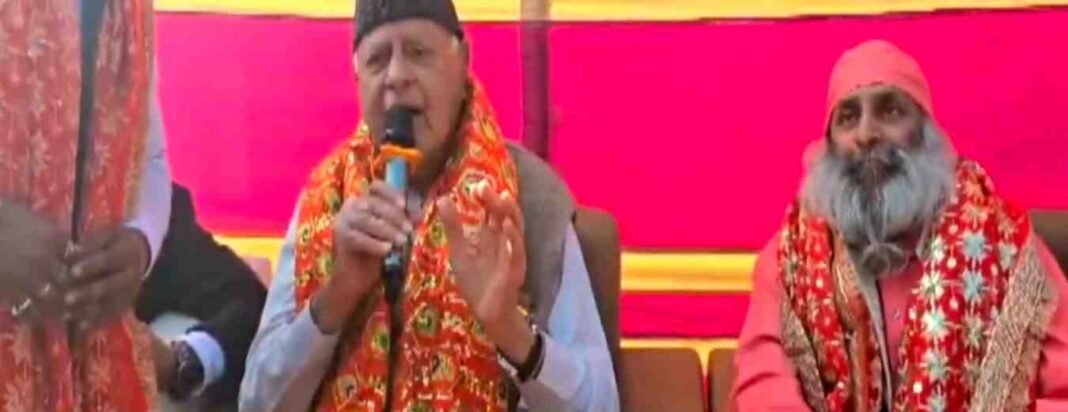In a recent visit to the Vaishno Devi shrine in Katra, Jammu & Kashmir, National Conference leader Farooq Abdullah participated in a devotional gathering, delighting attendees by singing a popular bhajan.
The 87-year-old former Chief Minister was attending a religious event at an ashram when a devotee invited him to join in the singing. Abdullah enthusiastically took the microphone and contributed to the bhajan “Tune Mujhe Bulaya Sherawaliye,” completing the line “main aaya, main aaya Sheran waaliye,” much to the joy of those present.
The moment was captured on video and quickly gained traction on social media, showcasing Abdullah adorned in a traditional red scarf, a common sight among pilgrims visiting the revered shrine.
Beyond his musical participation, Abdullah addressed pressing local concerns, particularly the contentious ropeway construction project in Katra.
He urged the management of the Mata Vaishno Devi Shrine to consider the welfare of the local community, emphasizing that their actions should not adversely affect the residents.
“Those running the shrine’s operations should not take actions that harm the interests of the local people or create problems for them,” he stated, expressing solidarity with the local populace who have been protesting against the ropeway initiative.
Abdullah highlighted the significant role of the community in shaping governance, asserting that the people possess the power to influence political outcomes.
He noted that authorities are now seeking input from locals regarding the ropeway’s construction, indicating a shift in approach. “The people living in these hills come here to earn their livelihood with the blessings of Mata.
But they have been forgotten. They think they are everything. They are nothing. When the power of God prevails, everything else fades away,” he remarked, drawing a parallel to broader issues, including those faced in California.
His visit and remarks underscore the ongoing dialogue between local leaders and the community regarding development projects and their implications for residents, as well as the importance of preserving the cultural and spiritual significance of the Vaishno Devi shrine.








